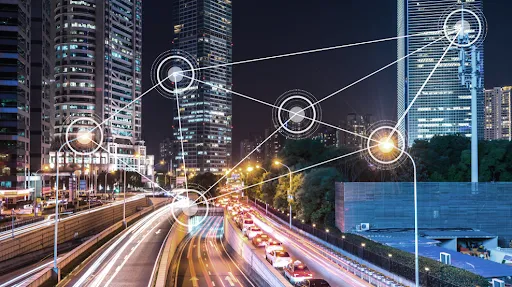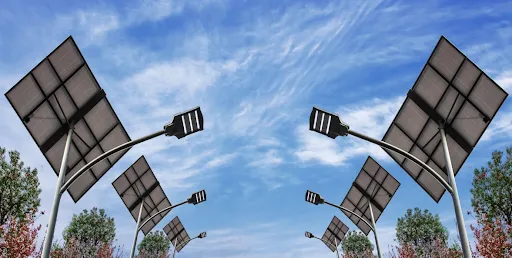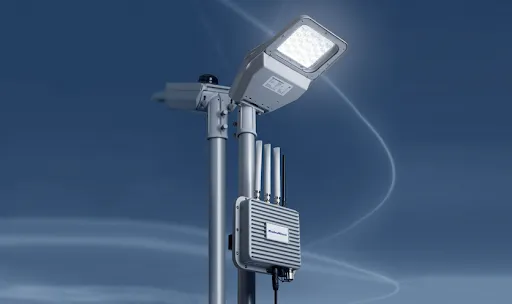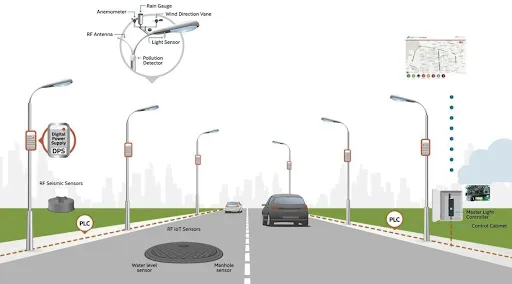
Table of Contents
NB-IoT Smart Lighting Solutions for More Sustainable Cities
When night falls, our cities come alive with light. But how can we balance the need for safety and aesthetics with environmental responsibility? The answer lies with smart city lighting, specifically NB-IoT intelligent lighting solutions. This innovative approach harnesses technology to create more sustainable cities, drastically reducing energy use while ensuring our urban areas remain beautifully illuminated.
Introduction to NB-IoT Lighting
Wandering down any street in a technologically advanced city, you’ll notice a key component – smart city street lighting. The shining stars of this lighting revolution are IoT systems, whose primary focus is NB-IoT energy saving. These systems promote safety and act as a steward for sustainability, embodying the ethos of a modern metropolis. Their capacity to minimize energy usage while maintaining high-performance lighting transforms our cities into efficiency and conservation models.
Defining NB-IoT and its Role in Smart Lighting
So, what exactly is NB-IoT, and how does it enable smart city lighting solutions? NB-IoT, or Narrowband Internet of Things, is a technology designed for efficient communication and connectivity between devices in a vast network. Let’s look at some key points:
- NB-IoT uses low power, making it a sustainable urban lighting solution.
- It enables remote control and management of lighting systems, allowing cities to adjust lighting based on needs and conserve energy.
- The technology is flexible and scalable, ideal for expanding and adapting to a city’s changing requirements.
- With NB-IoT, lighting systems can provide valuable data, leading to insights that can further optimize energy use.
By seamlessly integrating into our urban landscapes, NB-IoT is revolutionizing how we light our cities, paving the way for a brighter, more sustainable future.
NB-IoT in the Context of IoT and Lighting Technology
Nestled within the broad umbrella of IoT (Internet of Things) is a shining star – NB-IoT-enabled smart lighting. Like other smart city technologies, this solution leverages the power of connectivity to drive efficiency. IoT technology allows many devices to communicate and interact, but NB-IoT takes it one step further. It provides a narrower, more energy-efficient band, making it ideal for applications like intelligent lighting, where devices must communicate over long periods without draining power resources.
Exploring the Implementation of NB-IoT Lighting Solutions
Imagine a city where every streetlight can adapt to the needs of its environment. That’s the beauty of NB-IoT-enabled smart lighting. These systems can be programmed for remote lighting management, allowing for real-time adjustments based on environmental conditions. If a storm is brewing, the lights can increase in intensity. During quiet late-night hours, they can dim to conserve energy. The result? A responsive, innovative city that shines a light on sustainability.
Real-life Examples of NB-IoT Lighting Applications in Cities
Across the globe, cities are starting to recognize the benefits of NB-IoT lighting. Let’s explore a few examples of smart street lighting solutions:
- Copenhagen, Denmark: Copenhagen is on a mission to become carbon-neutral by 2025, and NB-IoT lighting plays a crucial role. The city installed a network of smart lights that adjust their brightness based on the time of day and year, reducing energy consumption by an impressive 50%.
- Los Angeles, USA: LA’s streets are illuminated by over 200,000 intelligent LED lights, controlled and managed by an NB-IoT network. It allows real-time monitoring and quick responses to outages, enhancing public safety and reducing energy waste.
- Amsterdam, Netherlands: Amsterdam has deployed intelligent lighting systems that adjust brightness levels based on pedestrian and vehicle movements in some areas. It’s a clever way to ensure safety while saving energy.
These cities are setting the bar high, showcasing the incredible potential of NB-IoT lighting in our urban landscapes. As more cities follow suit, we move closer to a more sustainable and efficient world.
Challenges and Solutions in Implementing NB-IoT Smart Lighting
While the idea of IoT lights, smart and interconnected, transforming our cities is enticing, the road to implementation is not without bumps. Network coverage, device compatibility, and data security must be addressed.
City lighting optimization can be achieved by employing standardized protocols for seamless device integration, enhancing network infrastructure for broader coverage, and implementing robust security measures to protect data integrity. Overcoming these challenges can enable cities to unlock the potential of NB-IoT smart lighting fully.
Advantages and Benefits of NB-IoT Smart Lighting
NB-IoT lighting applications are heralding a new era in urban illumination. Let’s highlight the key benefits:
- By adjusting to real-time environmental conditions, NB-IoT lighting significantly reduces energy consumption.
- Lower energy use translates to reduced utility costs. Additionally, remote monitoring lowers maintenance costs.
- Less energy usage means a smaller carbon footprint, contributing to climate change mitigation.
- The collected data can be used to optimize city lighting further, contributing to the overall smart city evolution.
These advantages position NB-IoT lighting as a frontrunner toward sustainable urban development.
Reduction of Energy Costs with NB-IoT Smart Lighting
A significant win for smart lighting with NB-IoT is the potential for massive energy cost savings. These systems optimize usage and cut waste expenditure by enabling cities to tailor their lighting needs to actual conditions. The financial savings can be redirected to other critical urban services or infrastructure improvements.
Furthermore, implementing an urban IoT lighting infrastructure not only saves on energy costs but also creates an interconnected city framework that can be used to gather valuable data, leading to more innovative city management and further cost savings.
Low Maintenance Cost of NB-IoT Smart Lighting
Another significant advantage of NB-IoT smart lighting technology is its low maintenance cost. The systems are designed to last, with components that resist wear and tear. The remote monitoring capabilities mean potential issues can be detected and addressed before they become bigger problems. The result is fewer service disruptions and decreased need for costly, labor-intensive repairs, making this lighting solution an intelligent choice for budget-conscious cities.
NB-IoT Smart Lighting and Reduced Carbon Footprint
Smart city lighting has long been a tool in our environmental preservation arsenal, and with the advent of NB-IoT, its role has only grown. The smart systems, powered by lighting automation, dynamically adjust to the environment to reduce unnecessary energy use. By consuming only the energy they need, these systems significantly lower greenhouse gas emissions, contributing to a city’s efforts to reduce its carbon footprint.
The Broad Spectrum of Benefits from NB-IoT Smart Lighting Solutions
The benefits of smart streetlights extend far beyond energy and cost savings. From enhancing public safety to enabling more intelligent city management, NB-IoT lighting solutions offer various advantages that transform our cities into interconnected, efficient, and sustainable habitats.
Enhancing Public Safety and Security
Safety and security are paramount in any urban environment. Intelligent lighting solutions equipped with IoT-enabled sensors for smart lighting provide an effective measure to enhance both. The systems can respond in real-time to environmental changes, such as increasing brightness when pedestrian traffic is detected or alerting authorities to unusual activities. The added layer of security that smart lighting provides helps create safer, more secure urban spaces for all city dwellers.
Maximizing Lighting Efficiency and Minimizing Light Pollution
Smart cities lighting is designed to maximize efficiency without sacrificing the quality of illumination. The benefits are manifold:
- Adaptive Lighting: NB-IoT lighting systems adapt to real-time conditions, dimming when there’s abundant natural light or less pedestrian traffic, leading to significant energy savings.
- Minimized Light Pollution: The targeted, precise lighting reduces light spillage into the night sky, helping to curb light pollution.
Besides, by minimizing artificial light intrusion into natural habitats, we protect nocturnal wildlife and maintain the beauty of the starry sky.
Supporting Smart City Initiatives and Urban Development
By integrating narrowband IoT lighting control into urban landscapes, we’re not only enhancing lighting quality. We’re setting the stage for comprehensive intelligent city initiatives, where everything from traffic control to waste management can be interconnected and optimized. This technology forms a crucial part of the infrastructure for urban development, paving the way for future advancements and adaptations in our rapidly evolving cities.
Future of NB-IoT Lighting Solutions
As we look to the future, IoT lighting efficiency will continue to play a pivotal role in our cities’ sustainable development. We can anticipate more accurate and adaptive street lighting responses by integrating more advanced technologies like machine learning and artificial intelligence. The future also holds promise for smart light sensors that can provide data on more than just illumination – they could monitor air quality and traffic and even help manage emergencies, broadening the scope of IoT benefits.
Innovations and Trends in NB-IoT and Smart Lighting
The world of NB-IoT and intelligent lighting is a hotbed of innovation. Future trends are likely to include more granular control over lighting, with lights able to respond to highly localized environmental conditions. We might also see the integration of solar power for lighting, further reducing reliance on the grid. Additionally, the rise of 5G networks could provide faster, more reliable connections for these systems, improving performance and energy efficiency. The future of NB-IoT lighting shines brightly, offering a beacon of sustainability and efficiency for our cities.
Potential Impacts on Sustainability and Urban Life
The impact of NB-IoT lighting on sustainability and urban life cannot be overstated. It allows cities to drastically reduce their energy consumption and carbon footprint, playing a pivotal role in combating climate change. The convenience of remote management and maintenance leads to cost savings and improved public services.
Meanwhile, enhanced safety and security foster a safer living environment for city dwellers. By reducing light pollution, we maintain the beauty of the night sky and protect nocturnal wildlife. All these factors contribute to an improved quality of urban life, driving us toward a sustainable future.
The Transformational Impact of NB-IoT Smart Lighting
In our quest for sustainable cities, NB-IoT smart lighting is a lighthouse guiding the way. This transformational technology optimizes energy use, cuts costs, enhances safety and supports intelligent city initiatives. By choosing to implement such technologies, we participate in creating an efficient and sustainable urban landscape.
The road ahead is illuminated by intelligent street lighting, bringing cities into the future while mindful of our environmental responsibility. So, let’s take this journey together, leveraging NB-IoT to create cities that are not just smart but also sustainable. After all, the choices we make today shape the world of tomorrow.
RELATED ARTICLES
Latest Articles
 Unlocking Success: Mastering Bank PO Interview PreparationIn EducationApril 24, 2024For banking careers, PO interviews stand as formidable […]
Unlocking Success: Mastering Bank PO Interview PreparationIn EducationApril 24, 2024For banking careers, PO interviews stand as formidable […] The Strategic Value of Purchasing FontsIn TipsApril 18, 2024In today’s visually driven world, fonts are more […]
The Strategic Value of Purchasing FontsIn TipsApril 18, 2024In today’s visually driven world, fonts are more […] Revolutionizing Business: How AI Transforms Customer Experience in the Inflatable IndustryIn BusinessApril 16, 2024Inflatable water slides are the epitome of summer fun, […]
Revolutionizing Business: How AI Transforms Customer Experience in the Inflatable IndustryIn BusinessApril 16, 2024Inflatable water slides are the epitome of summer fun, […] Most Asked Microservice Interview Questions For 2024In TechnologyApril 2, 2024To keep up with changing trends in the tech industry […]
Most Asked Microservice Interview Questions For 2024In TechnologyApril 2, 2024To keep up with changing trends in the tech industry […] Best JavaScript and CSS Library In 2024In TechnologyApril 2, 2024With the ever-expanding functionality of web […]
Best JavaScript and CSS Library In 2024In TechnologyApril 2, 2024With the ever-expanding functionality of web […] Front-End Development Trends to Follow in 2024In TechnologyApril 2, 2024For better engagement, the front-end development of […]
Front-End Development Trends to Follow in 2024In TechnologyApril 2, 2024For better engagement, the front-end development of […] Simplifying Mealtime: Meal Prepping for a Family of FourIn UncategorizedMarch 22, 2024In the hustle and bustle of daily life, planning and […]
Simplifying Mealtime: Meal Prepping for a Family of FourIn UncategorizedMarch 22, 2024In the hustle and bustle of daily life, planning and […] How to Freeze Dry Candy With And Without a Machine?In FoodFebruary 27, 2024A candy lover constantly searches for novel and […]
How to Freeze Dry Candy With And Without a Machine?In FoodFebruary 27, 2024A candy lover constantly searches for novel and […]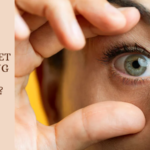 How to Get Something Out Of Your Eye Immediately?In healthFebruary 27, 2024Getting something inside your eyes can be frustrating […]
How to Get Something Out Of Your Eye Immediately?In healthFebruary 27, 2024Getting something inside your eyes can be frustrating […] The Evolution of Remote Control Technology: From RC Cars to DronesIn TechnologyFebruary 22, 2024Remote control technology has come a long way since […]
The Evolution of Remote Control Technology: From RC Cars to DronesIn TechnologyFebruary 22, 2024Remote control technology has come a long way since […] Unveiling the most popular carnival costumes: A colorful parade of creativityIn FashionFebruary 19, 2024In the world of festivities and merrymaking, few […]
Unveiling the most popular carnival costumes: A colorful parade of creativityIn FashionFebruary 19, 2024In the world of festivities and merrymaking, few […] Custom GPTs: The Next AI Opportunity for BusinessesIn Business, TechnologyFebruary 14, 2024The rise of artificial intelligence has transformed […]
Custom GPTs: The Next AI Opportunity for BusinessesIn Business, TechnologyFebruary 14, 2024The rise of artificial intelligence has transformed […]
stopie.com is a participant in the Amazon Services LLC Associates Program, an affiliate advertising program designed to provide a means for sites to earn advertising fees by advertising and linking to Amazon.com.
Clicking on an Amazon link from stopie.com does not increase the cost of any item you purchase.
We will only ever link to Amazon products that we think our visitors may be interested in and appreciate learning more about.

